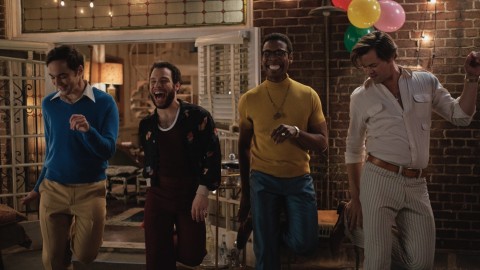
The White Stripes pose a lot of questions. Did straight-to-the-gut blues rock really need to come with a strict colour scheme and the whole sister-wife-brother-husband thing? Is it possible for anyone who has attended a football match in the last decade to still appreciate the brilliance of that not-a-bassline bassline? Would a more technically demonstrative drummer have really made the band any better? Does any of this matter when the music was that good?
Actually, that last one’s easy to answer. Case in point: the task that sits before us and the awkwardness of putting any of these six albums at the bottom of the pile. No wonder there was so much excitement online at the mere fact that the band are set to release a ‘Greatest Hits’ album. Even after you strip away the uniforms, the Michel Gondry videos, the incessant throwing of shade and the fist fights with Jason Stollsteimer, you’re still left with one of the best rock bands of the last 20 years.
‘The White Stripes’ (1999)
There’s something of a Seinfeld factor to The White Stripes’ debut: it can be hard to truly grasp its importance in retrospect. By 1999, mainstream rock had been diluted into dreary post-grunge growling and the cookie-cutter angst of nu-metal. It’s nothing short of astounding for a raw, witty debut such as ‘The White Stripes’ – all bloody fingers and blown-out amps – to land in the middle of all that.
‘The White Stripes’ is equal parts Led Zeppelin and Jon Spencer Blues Explosion, but with the excesses discarded and an undefinable something extra added. Maybe it’s the unexpected sweetness (pun intended, of course) of ‘Sugar Never Tasted So Good’. Maybe it’s how ‘The Big Three Killed My Baby’ sounds so huge with just two instruments. Everything that was to come is right there, albeit in hugely impressive sketches. The fully realised masterpieces were waiting in the wings.
‘De Stijl’ (2000)
That Jack and Meg’s first two albums are at the bottom of this tree shouldn’t suggest they deserve being considered their ‘worst’. Look at it more as the sign of a band that was heading in the right direction, growing in public rather than arriving fully formed. ‘De Stijl’ doesn’t mess too much with the formula set out on the band’s debut, refining their garage rock take on stomp and holler blues and finding space here and there to stretch out. The songwriting takes a leap forward, too, as evidenced by the utterly charming piano-driven ‘Apple Blossom’ and the ‘Led Zeppelin III’-style ‘I’m Bound To Pack It In’.
What really stands out on ‘De Stijl’ is that The White Stripes are already masters of their own filter, able to pass a range of influences through it and have it all come out sounding like The White Stripes. Even their cover of country blues singer Blind Willie McTell’s ‘Your Southern Can Is Mine’ sounds like a White Stripes original. The primal, roof-shaking rockers sound tighter, the boundaries are looser and the centre holds together perfectly.
‘Icky Thump’ (2007)
Inscribed somewhere in rock’s sacred scrolls are the words: “Beware the band that speaks of going ‘back-to-basics’.” The standard translation is something like: “We tried some new things, nobody liked it, we ran out of ideas and now we’re plagiarising our early stuff.” For The White Stripes, it meant anything but that. 2005’s ‘Get Behind Me Satan’, this record’s predecessor, was an impressive departure, but the band clearly yearned to make a racket again, and that’s exactly what they do on ‘Icky Thump’, their most recent album. It’s not a ‘back to the garage’ undoing of the previous eight years, but marries the stylistic restlessness of ‘Get Behind Me Satan’ with a muscular directness.
There’s also a nicely-struck balance between grit and polish on songs such as ‘30MPH Torrential Outpour Blues’ and standout track ‘You Don’t Know What Love Is (You Just Do As You’re Told)’, giving the impression of a band having a lot of fun tearing it up in a very expensive studio. And if the Faces-style acoustic closer ‘Effect And Cause’ turns out to be the very last thing we hear on a White Stripes album, then it’s a fine way for the band to bow out.
‘Elephant’ (2003)
‘Seven Nation Army’ will dominate any conversation about ‘Elephant’. But the danger is that any conversation that uses that enduring hit to evaluate the album as a whole will miss the point completely. Yes, it’s more polished than its three predecessors, but ‘Elephant’ isn’t standard tilt-at-the-big-time fare by any stretch of the imagination. It’s a big record, but ‘Elephant’ is also dark, angry, paranoid and infinitely deeper than a field of people singing “Ohhhhhh Jeremy Corbyn!”.
It’s also slyly funny, overflowing with Jack’s frequently underestimated turn of phrase. “I got your number written in the back of my Bible” is the kind of Southern-fried off-kilter romantic notion that a boy from Detroit has no business nailing, while London singer Holly Golightly singing “I love Jack White like a little brother” takes on a whole new meaning in light of the band’s self-created mythology. ‘White Blood Cells’ left the band with legions of new fans, but also plenty of doubters waiting for them to fail. ‘Elephant’ is a sublime example of how to make the latter eat their words.
‘White Blood Cells’ (2001)
The White Stripes’ whole post-Jon Spencer thing felt unbelievably fresh on their first two albums but damn near ground-breaking on their third. The raw edges remain (you could punch through linoleum with the jagged stabs of ‘Expecting’) but the growth from ‘De Stijl’ is remarkable, not least in Jack’s realisation that he didn’t always need to sing like Bobcat Goldthwait in a plunge pool. Even a seemingly throwaway track like ‘Little Room’ feels exciting, especially coming sandwiched between the assault of ‘Expecting’ and the brooding tension of ‘The Union Forever’.
What really comes into focus on ‘White Blood Cells’ is Jack’s two distinct personas: the dutiful romantic of ‘Fell In Love With A Girl’ and ‘Hotel Yorba’ vs the world-weary ne’er-do-well of ‘I’m Finding It Harder To Be A Gentleman’. It’s the former that inspires the best songs, particularly the irresistibly sweet ‘We’re Going To Be Friends’, an ode to childhood friendships that could come off as unspeakably creepy, but rings beautifully innocent in Jack’s hands. Throughout ‘White Blood Cells’ it’s clear that this is a band that has sharpened their attack, broadened their scope, cleaned up in all the right ways and really delivered the goods.
‘Get Behind Me Satan’ (2005)
There’s more than one way to climb a mountain. The White Stripes’ first two albums dug in tooth and nail and hauled themselves up the rock face. The next two found a more comfortable funicular railway to get there in style. ‘Get Behind Me Satan’ wanders its way to the top through deep, dark woods.
Having taken their inimitable garage blues to appropriately leviathan levels on ‘Elephant’, it makes sense that the band would try a different tack next time out. Jack’s work with Blanche, Loretta Lynn and T-Bone Burnett (on the 2003 Cold Mountain movie soundtrack) offers some sort of contextual framework for the Gothic Americana flourishes, but the band aren’t about to let the record be that easily pigeonholed.
The pre-release warning was this would be a quieter affair, but then straight out of the gate came the futuristic, rave-up ‘Blue Orchid’. Once the high-gloss, metallic distortion gives way to marimbas, things start to get interesting, a more adventurous spirit finding fascinating detours.
‘My Doorbell’ wastes to time declaring itself one of the best songs in the band’s arsenal, but it’s rivalled almost immediately by ‘Forever For Her (Is Over For Me)’. And then the whole shebang convenes at the impossibly lovely ‘I’m Lonely (But I Ain’t That Lonely Yet)’, which promptly blows the rest of the album out of the water. ‘Get Behind Me Satan’ might take more curious detours than the four albums that preceded it, but the right paths lead to some breath-taking vistas.
The post The White Stripes: every single album ranked and rated appeared first on NME Music News, Reviews, Videos, Galleries, Tickets and Blogs | NME.COM.










